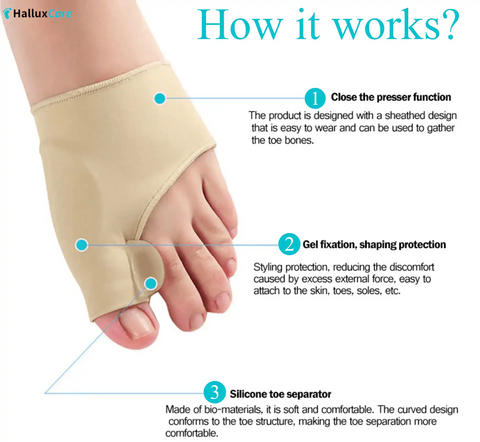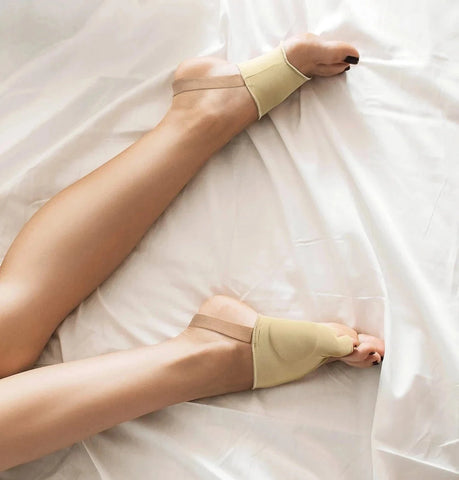How a Car Accident and Bunions Are Connected: A Deeper Look at Gait, Pain, and Recovery
Last Updated: July 2025 | Written by Jessica Hart, DPT — Doctor of Physical Therapy, Certified Orthopedic Specialist
Many people don’t realize that bunions are often more than just a localized foot issue. In fact, they can be a symptom of a much larger biomechanical imbalance involving your gait, posture, and even past trauma. If you've been in a car accident and are now experiencing worsening bunion pain, you're not imagining things — there’s a real connection. A Reddit user recently shared a personal story highlighting this link, shedding light on how trauma can disrupt the body’s alignment and movement patterns, ultimately impacting your feet.
In this article, we’ll examine how trauma like a car accident can contribute to bunion progression, supported by expert insights and clinical research. We’ll also provide actionable advice backed by physical therapy and podiatric medicine to help you find relief and restore balance.
Understanding the Chain Reaction: How Trauma Affects Your Feet
After a car accident or other significant injury, your body often enters a state of compensation. For example, if you injure your hip, back, or knee, your body might alter your gait (the way you walk) to avoid pain. While this is a natural short-term adaptation, it can lead to long-term biomechanical issues — especially in the feet.
Research published in the Journal of Foot and Ankle Research confirms that altered gait mechanics can increase pressure on the first metatarsophalangeal joint — the joint affected by bunions. Over time, this added stress can accelerate bunion formation or worsen existing deformities.
Key Points From the Reddit Insight
- Post-trauma compensation: Car accident injuries often lead to asymmetrical weight distribution, placing excess load on one foot.
- Bunions and biomechanics: Imbalanced gait patterns increase pressure on the big toe joint, contributing to inflammation and bunion progression.
- Physical therapy benefits: Physical therapy helps correct these imbalances through gait retraining, muscle strengthening, and postural education.
- Core strength matters: According to the American Physical Therapy Association (APTA), core stability is essential for proper lower extremity alignment and injury prevention.
4.9 ⭐⭐⭐⭐⭐ ( 1843 reviews )
How to Take Control of Bunion Pain Post-Injury
If you’ve recently experienced trauma — whether from a car accident, surgery, or chronic posture issues — and are noticing bunion pain, there’s a lot you can do to regain control. Below are practical, medically backed steps to support bunion relief and overall foot health:
- See a physical therapist: A licensed PT can assess your gait and identify asymmetries or imbalances caused by your injury.
- Choose appropriate footwear: According to the American College of Foot and Ankle Surgeons (ACFAS), shoes with a wide toe box and arch support help reduce bunion stress.
- Use orthopedic bunion sleeves: These sleeves gently realign the joint and cushion the big toe during movement, reducing pain and inflammation.
- Strengthen your core and hips: Exercises like planks, bridges, and side-lying leg lifts support pelvic stability and better foot alignment.
- Incorporate daily stretching: Stretching the calves, hamstrings, and plantar fascia keeps the kinetic chain flexible and reduces compensatory strain.
Why the Right Support Gear Matters
While correcting gait and posture is essential, using the right support tools can make a significant difference in how you feel day-to-day. Orthopedic bunion sleeves, for example, are designed to reduce joint stress, improve alignment, and provide lasting comfort throughout the day.
Recommended Bunion Relief Products
For daily bunion support and correction, the Orthopedic Bunion Pain Relief & Correction Sleeve offers targeted realignment and cushioning, ideal for both walking and rest periods.
If you suffer from bunionettes (also called Tailor’s bunions), the Tailor's Bunion Bunionette Pain Relief Protection Sleeves provide gentle compression and joint stability specifically for the outer side of the foot.
To soothe irritated skin around bunions and promote healthy circulation, the Jamaica Black Castor Oil Soothing Oil offers a natural anti-inflammatory solution, perfect for massaging into sore areas.
Key Takeaways
- Trauma, like car accidents, can alter your gait and posture — indirectly worsening bunions.
- Proper biomechanics, core strength, and physical therapy are essential for long-term bunion relief.
- Supportive gear like bunion sleeves can reduce inflammation and correct joint misalignment.
- Stretching and strengthening exercises help restore balance and reduce compensatory pain.
Practical Tips for Everyday Relief
- Wear sneakers with custom orthotics during long walks or errands.
- Keep a bunion sleeve in your bag to use after workouts or standing for long hours.
- Try a nightly foot soak with Epsom salt and a drop of soothing oil to reduce inflammation.
- Set reminders during the day to stretch your calves and hamstrings — tightness here impacts foot mechanics.
Frequently Asked Questions (FAQs)
Can a car accident really cause bunions?
Not directly, but it can cause postural and gait changes that exacerbate pre-existing bunion tendencies or cause new ones to form. Trauma often leads to muscle imbalances that redistribute pressure onto the forefoot.
Do bunion sleeves actually work?
Yes. According to many podiatrists, bunion sleeves provide non-surgical support by gently guiding the toe into proper alignment, reducing friction and pain during movement — especially when used alongside strengthening and stretching routines.
How long does it take to see improvement with physical therapy?
Most patients report noticeable improvements in pain and mobility within 4–6 weeks of consistent therapy, depending on the severity of their bunion and the presence of other injuries.
Should I get surgery for my bunion?
Surgery is typically reserved for severe cases where conservative measures have failed. The American Orthopaedic Foot & Ankle Society recommends exhausting non-invasive treatments before considering surgical correction.
Final Thoughts
Bunions are a whole-body issue, especially when triggered or worsened by trauma. Understanding your body’s biomechanics and addressing imbalances through physical therapy, supportive footwear, and targeted products can dramatically improve your comfort and quality of life.
Have you ever experienced pain in other parts of your body from a foot issue like bunions? Share your story or tips in the comments below — your insight could help someone else on their road to recovery!
Disclaimer: This content is for informational purposes only and is not intended as a substitute for professional medical advice, diagnosis, or treatment. Always consult your physician or a qualified healthcare provider with any questions you may have regarding a medical condition.
Disclosure: Some links in this article may be affiliate links, meaning we may earn a commission if you purchase through them. This helps support our work at no additional cost to you.




